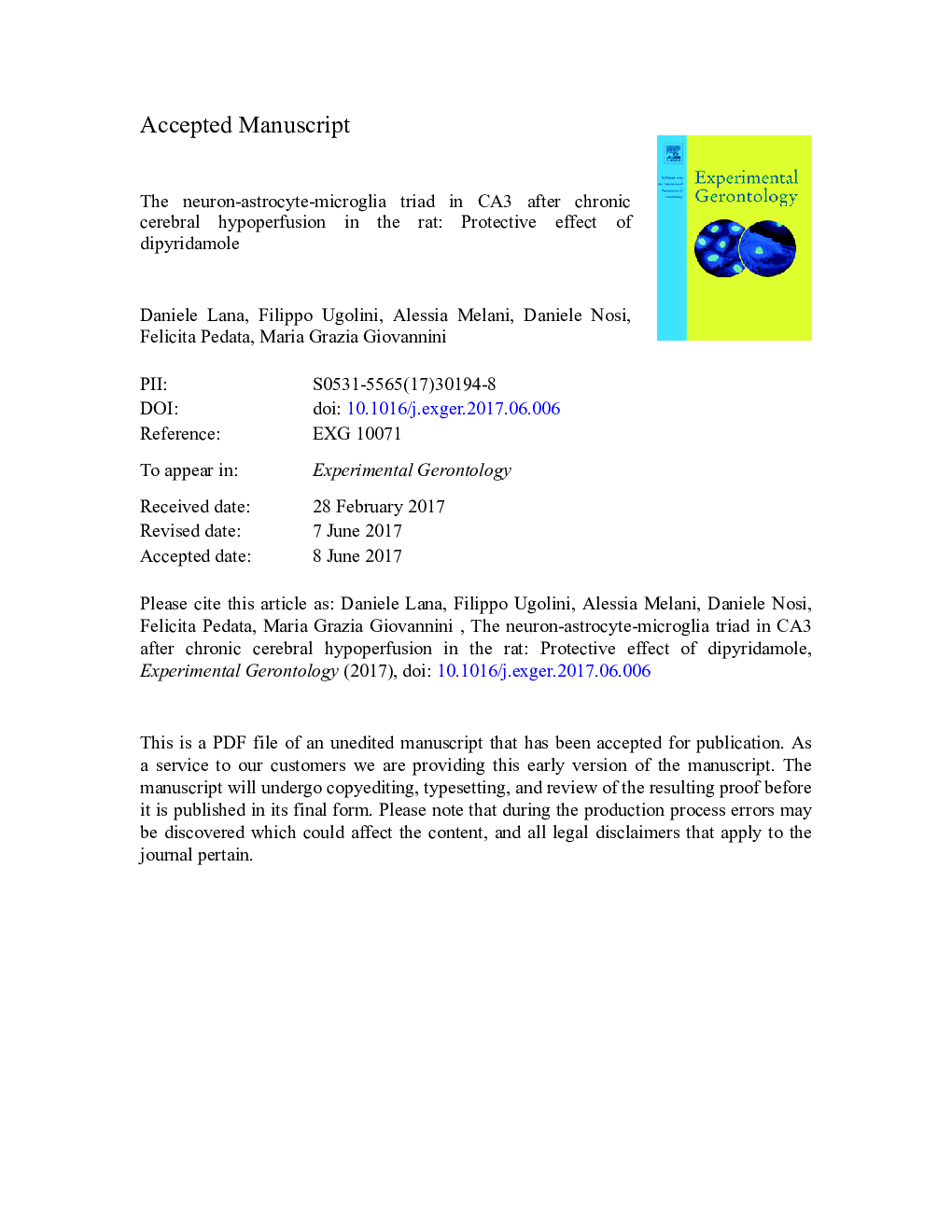| Article ID | Journal | Published Year | Pages | File Type |
|---|---|---|---|---|
| 5501541 | Experimental Gerontology | 2017 | 34 Pages |
Abstract
We investigated the quantitative and morphofunctional alterations of neuron-astrocyte-microglia triads in CA3 hippocampus, in comparison to CA1, after 2 Vessel Occlusion (2VO) and the protective effect of dipyridamole. We evaluated 3 experimental groups: sham-operated rats (sham, n = 15), 2VO-operated rats treated with vehicle (2VO-vehicle, n = 15), and 2VO-operated rats treated with dipyridamole from day 0 to day 7 (2VO-dipyridamole, n = 15), 90 days after 2VO. We analyzed Stratum Pyramidalis (SP), Stratum Lucidum (SL) and Stratum Radiatum (SR) of CA3. 1) ectopic neurons increased in SL and SR of 2VO-vehicle, and 2VO-dipyridamole rats; 2) apoptotic neurons increased in SP of 2VO-vehicle rats and dipyridamole reverted this effect; 3) astrocytes increased in SP, SL and SR of 2VO-vehicle and 2VO-dipyridamole rats; 4) TNF-α expression increased in astrocytes, blocked by dipyridamole, and in dendrites in SR of 2VO-vehicle rats; 5) total microglia increased in SL and SR of 2VO-vehicle and 2VO-dipyridamole rats; 6) triads increased in SR of 2VO-vehicle rats and dipyridamole reverted this effect. Microglia cooperated with astrocytes to phagocytosis of apoptotic neurons and debris, and engulfed ectopic non-fragmented neurons in SL of 2VO-vehicle and 2VO-dipyridamole rats, through a new mechanism called phagoptosis. CA3 showed a better adaptive capacity than CA1 to the ischemic insult, possibly due to the different behaviour of astrocytes and microglial cells. Dipyridamole had neuroprotective effects.
Related Topics
Life Sciences
Biochemistry, Genetics and Molecular Biology
Ageing
Authors
Daniele Lana, Filippo Ugolini, Alessia Melani, Daniele Nosi, Felicita Pedata, Maria Grazia Giovannini,
